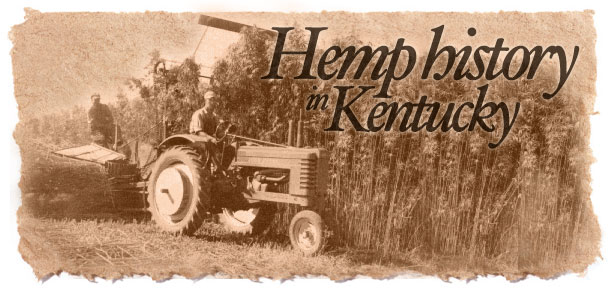United States CBD Policy
Hemp Production in Kentucky Now Under Way After Legal Hitch
The month of May 2014 saw a legal fight between the U.S.Drug Enforcement Administration (DEA) and the state of Kentucky. This was caused by the state’s plans to start production of industrial hemp after a freeze of about 40 years.
The DEA took into custody about 250 pounds of the state’s hemp seeds. This is a batch that had been imported from Italy for the first planting.
As the Federal authority still considers hemp a harmful plant, it was not ready to see this project start without being assured of the results. They only released seeds after forcing the state to apply for a permit.
However, the state’s administration has sought to challenge this demand by DEA in a court of law. The Kentucky Agriculture Commissioner’s office issued a statement saying:
“Although we applied for a permit to import a controlled substance, we still maintain industrial hemp is not a controlled substance and DEA has no authority over hemp pilot programs.”
They maintain that the Farm Bill gives that power to the states.
Federal law has given Kentucky a green light.
President Obama signed the Farm Bill into law in February. The law legalizes hemp production in states like Kentucky, which have passed laws to permit it. Given this development, many people saw the DEA’s actions as unwarranted.
Among those who were not happy was U.S. Sen. Mitch McConnell (R-Louisville), who said in a statement:
“…the DEA is using its finite resources to stymie plainly lawful hemp pilot projects at the very time Kentucky is facing growing threats from heroin addiction and other drug abuse.”
While the characteristics of hemp vs marijuana are well known, many people – including decision makers in bodies like the DEA – believe they are one and the same thing. Both are cannabis sativa, which explains the confusion. This legal lumping together of the two plants goes as far back as 1950s.
When marijuana was declared harmful and its production stopped in the 1970s, hemp could not escape this ban. This is despite the fact that hemp was being used for production of industrial products like fabric, paper, cooking oil, and soap. It had never shown any adverse effect on end users of these products.
Kentucky is not seeking to grow any illegal substance.
The difference between hemp and marijuana is in the concentrations of CBD vs THC, a compound that causes the “high” feeling. The amount of this compound in hemp is negligible. You can’t get high by consuming hemp products. Marijuana, on the other end, contains high levels of THC.
To start the pilot project, the state has set aside 13 acres in six of its universities. Different varieties of seeds are planted in the plots in the different universities.
After harvest, researchers at the University of Kentucky will analyze the fiber and seeds to determine which suits the state’s soil and climate.
Do you believe that the DEA has a role to play in the regulation of hemp pilot projects in Kentucky? Share your opinion with us.
FDA Disclaimer: These statements have not been evaluated by the Food and Drug Administration. Products sold by Healthy Hemp Oil are not intended to diagnose, treat, cure, or prevent any disease. The information on our website is intended to provide general information regarding our products and is not to be construed as medical advice or instruction. Read more


This is ridiculous! With all the scientific evidence that has been brought to light these last few years about the benefits of hemp (because it was obviously covered up in the past), the DEA should be focusing all of its efforts on the drugs that do harm vs. the ones that do good. It has been proven that marihuana does NOT do the harm that heroin, cocaine, meth, and other man-made drugs do. In fact, it has been proven that alcohol – which is legal and probably used by all DEA officials – does MUCH MORE harm than the inoffensive weed. Yet because it is “easier” and probably “safer” to confront, they want to continue their efforts on this rather than on the much more dangerous drugs. They should accept the facts – and the wishes of the great majority of Americans – and let go of their “reefer madness” illusion and get down to the real business of protecting its citizens from dangerous drugs. Or, they should switch careers.